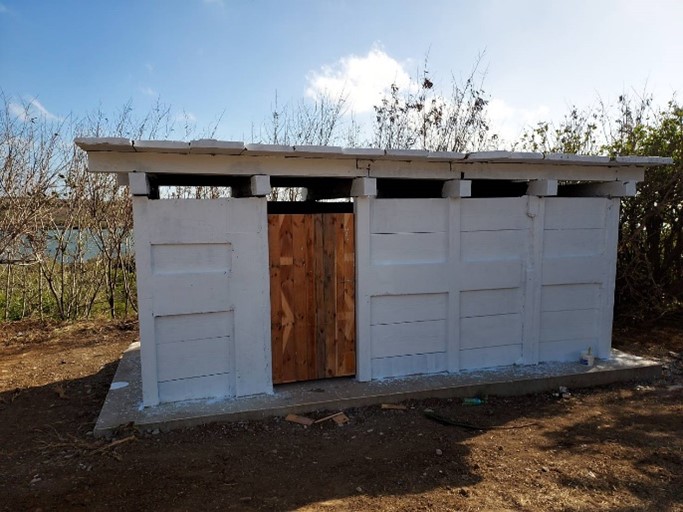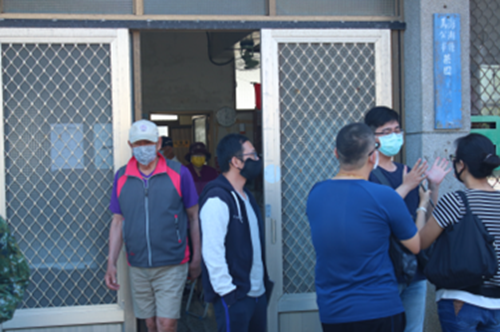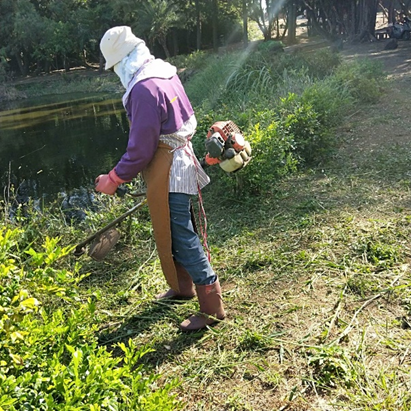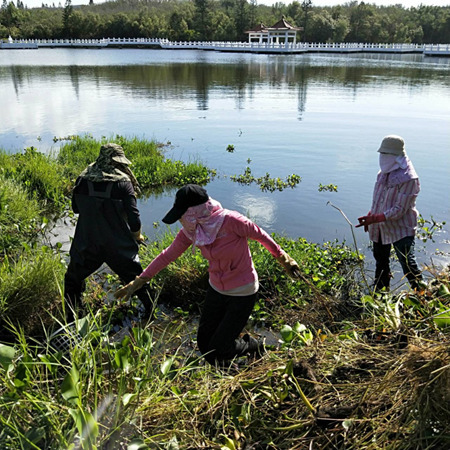Wise Use
Case Study
Water Quality Monitoring, Land Use Investigation, and Environmental Conservation & Management Plan for the 2021 (Local Level) Caiyuan Wetland
Date:2023/09/14
Number of Visitors106
Project title:Water Quality Monitoring, Land Use Investigation, and Environmental Conservation & Management Plan for the 2021 (Local Level) Caiyuan Wetland
Organizer:Penghu County Government
Project executive agency:National Pingtung University of Science and Technology
Hierarchy:Local Level (Announced as an important wetland on July 19, 2019, in the Republic of China)
Type:Coastal natural wetland and a small portion of artificial wetland

Toilets were renovated into toolrooms after the bird-watching season was over.
Features:
Caiyuan Wetland is home to significant ecological resources emcompassing the Black-faced Spoonbill, Peregrine Falcon, Black-winged Stilt, and Oriental Skylark.
Location:
Situated on the eastern side of Caiyuan Harbor, Caiyuan Wetland extends from County Road 205 in the north, excluding residential areas. The southern side includes Caiyuan Fishponds, and the eastern boundary is marked by County Road 201. The wetland covers an area of 42 hectares.

We responded to the feedbacks of the general public after the briefing session was over.
Origin:
The Caiyuan Sewage Treatment Plant is located in close proximity to the wetland. After its completion, the plant will initially treat domestic wastewater from Penghu county before discharging it into Twin-Lakes Park. In order to prevent any adverse impacts on the water quality and local ecology of the original wetland due to the discharge of treated water, a database on water quality and sediment monitoring will be established in the 2021 fiscal year as a benchmark for comparison after wastewater treatment. To understand the local residents' utilization of resources within and around the wetland, including fisheries and aquaculture practices and their current economic value, relevant investigations will be conducted in accordance with the principles of wise wetland use. With a focus on coexistence between human activities and ecological conservation, the operational management strategies will be redefined.

Repair and maintenance of the environment.
Project Objectives:
In the 2021 fiscal year, our objective is to continue assessing the current situation, which includes adding, removing, or renovating facilities, as well as maintaining and managing the site by employing personnel. This will facilitate the subsequent promotion of wetland tourist attractions and environmental education by integrating tourism, community, and schools. We aim to encourage more tourists and the general public to engage in wetland activities, providing them with a safer, more comprehensive, and comfortable environment to appreciate the beauty of nature. Through these efforts, we aim to create multi-dimensional value for the wetland.
Project Content:
Monitoring of wetland water quality; monitoring of wetland sediment; investigation of wetland and surrounding land use; repair and maintenance of existing facilities & environmental management; briefing session in local community.

Common water hyacinths were removed to create a clean environment.
Achievements and Benefits:
Monitoring of wetland water quality: We conducted water quality investigations, monitoring, and analysis at a total of 4 sampling points within the wetland, covering all four seasons.
Monitoring of wetland sediment: We conducted investigations and analysis of heavy metals in wetland sediments at 4 sampling points.
Investigation of wetland and surrounding land use: The objective of the investigation is to understand the land use and the types of activities taking place within the wetland and its surrounding areas. This helps to reinforce the principles and spirit of wise wetland use, enhancing local residents' identification and participation, building consensus on conservation advocacy, prioritizing ecological conservation, and collectively maintaining the integrity of the wetland.
Repair and maintenance of existing facilities & environmental management: We undertook the repair and maintenance of the wetland's ecological environment and landscape, effectively monitoring and controlling the impact of wastewater discharge from the sewage treatment plant on the wetland's water quality.
Briefing session in the local community: We organized a briefing session where local residents, landowners/managers, representatives from relevant authorities, and the general public were involved. The session was attended by 20 individuals.
